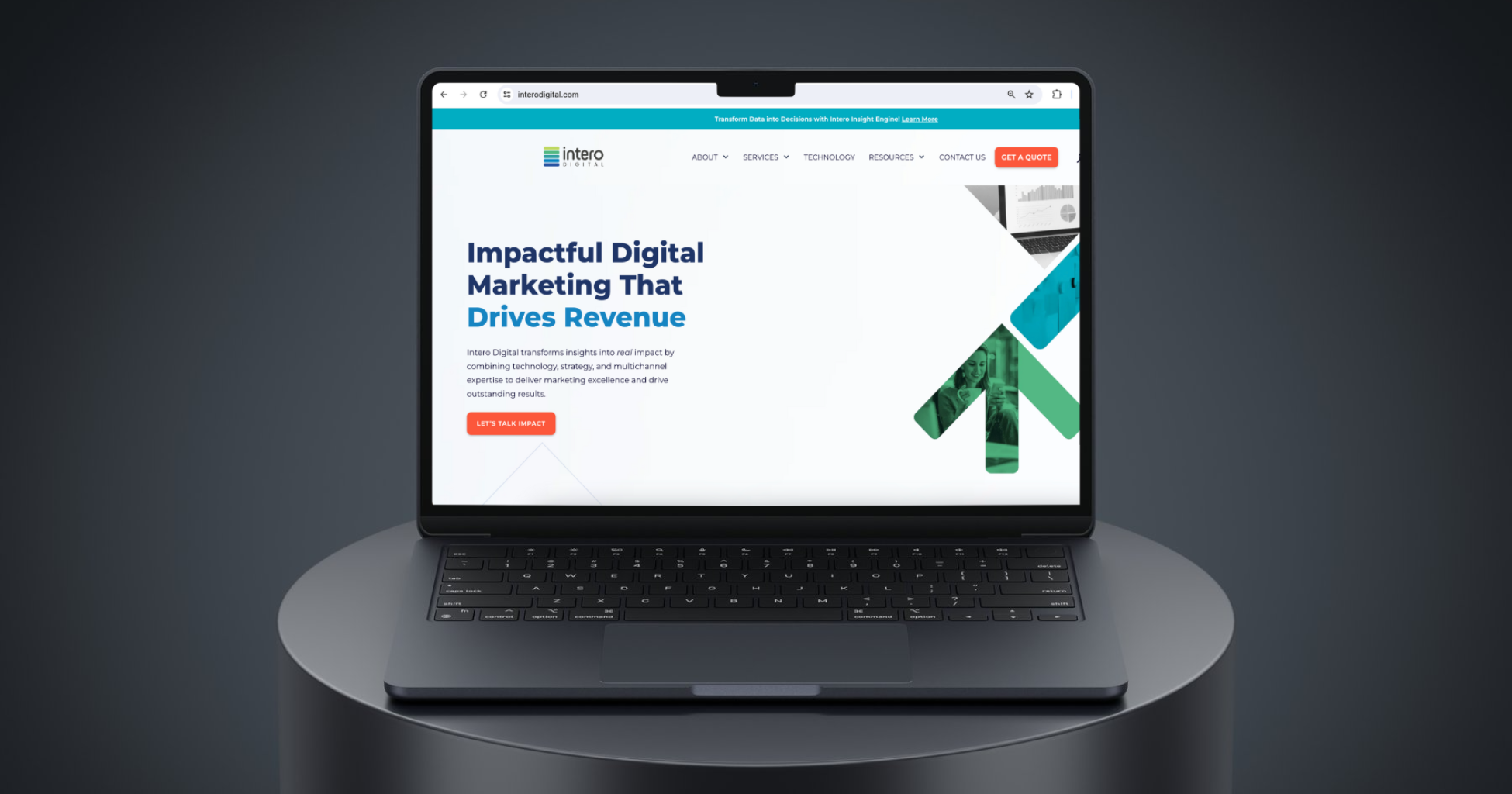
How We Turned Our New Website Into a Lead-Generating Powerhouse
How We Turned Our New Website Into a Lead-Generating Powerhouse
Erica Garman, VP of Marketing • Intero Digital • September 4, 2024

I remember the moment vividly. As the VP of marketing at Intero Digital, I stood at a critical crossroads. Our newly merged company, formed from six specialized digital marketing agencies, was facing a tough decision: How should we handle SEO for our legacy brand sites now that we’ve adopted a new website and brand? Each agency brought its own unique strengths (and leads), but spreading our efforts thin across multiple sites was diluting our impact. We knew we would eventually sunset the legacy sites, but when?
The decision wasn’t easy, but it was clear. We needed to stop our SEO efforts on the legacy sites and channel our resources into the new Intero Digital website. The move had opportunity costs, of course. We knew we risked losing the rankings, traffic, leads, and revenue from the other sites, but we also knew that the upside for the new site was greater.
Back to the Beginning: Our Origin Story
Before the inception of Intero Digital, it was our vision to create a digital marketing powerhouse that could excel in every facet of the field, providing a seamless and cohesive strategy for clients and brands. We knew we couldn’t achieve this alone; asking one team to master everything — from SEO to web development — was like asking a brain surgeon to also perform spine and foot surgery. So we sought out our other “surgeons,” merging six specialized digital marketing agencies over the course of several years. Each brought its own expertise: web design and development, creative services, SEO, paid media and social media, Amazon marketing, and content and PR. This strategic merger allowed us to offer a unified, specialized approach to our clients’ digital marketing needs.
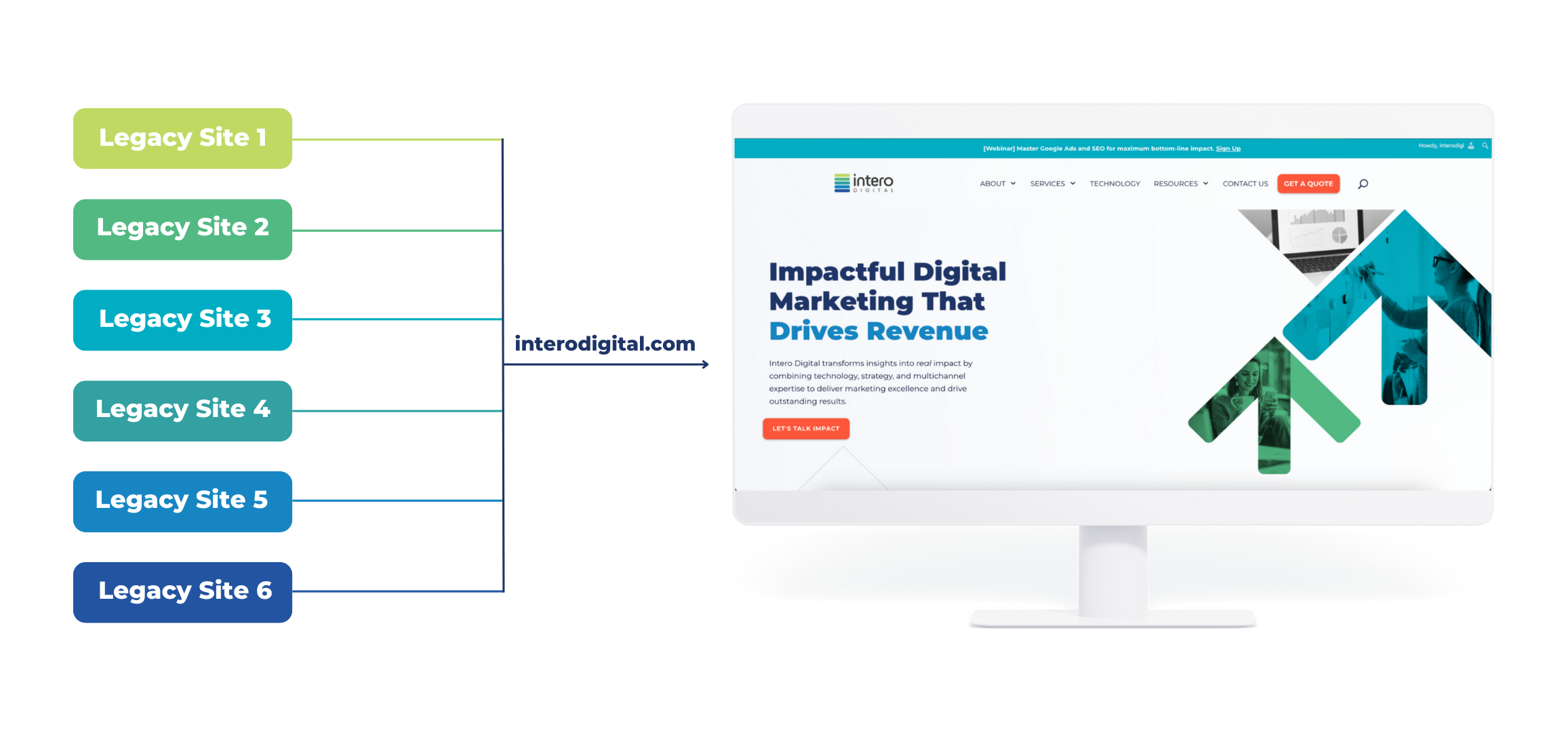
While our offering was now unified and streamlined, marketing for six different websites was not.
Initially, we kept the SEO strategies running for all of our specialized legacy sites, but it was burning resources and budget. We decided to gradually slow down and eventually stop the SEO and content efforts on our legacy sites but kept them live (no redirection) to continue some of our foundational ad campaigns that were still generating leads. Our goal was to throw everything into interodigital.com, a brand-new domain, and effectively replace the traffic and leads from six established websites. Two of these websites were responsible for 80% of our total lead flow.
The Payoff
Because we rely on organic traffic for a significant portion of our lead flow, getting the new website to perform quickly was critical. As soon as we channeled our efforts, the clock was ticking. After a year of investing in aggressive SEO, content-building, and technical auditing, our efforts paid off. I won’t gatekeep — here are the results:
-
- Established 4,413 new keyword rankings
- Went from 0 to 48 Domain Authority
- Grew organic users 174%
- Increased organic leads by 538%
- Realized 1517% in organic MRR
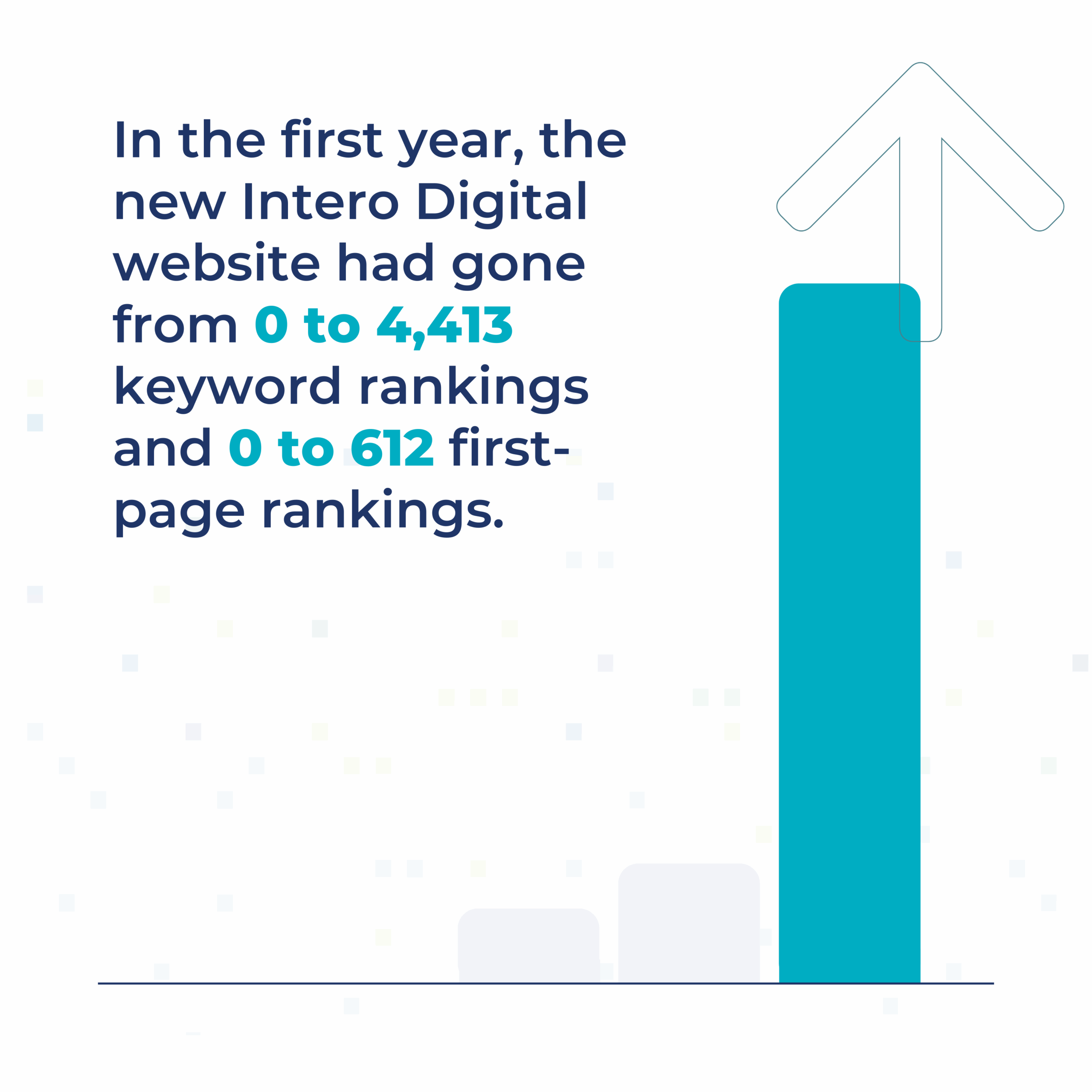
So How Did We Do It?
The results were substantial! In one year, we made significant headway in replacing the lead flow from our legacy sites and postured interodigital.com as our primary website for lead generation. We did this by focusing on six key areas:
- Keyword research and competitive analysis: We identified high-value keywords and analyzed the competitive landscape.
- Content creation and optimization: We developed and optimized high-quality content tailored to our target keywords and launched targeted link building campaigns.
- Technical SEO improvements: We made essential technical enhancements, such as optimizing site speed and implementing structured data.
- Local SEO initiatives: We focused on localized keyword mapping and content creation for specific markets.
- National SEO strategy: We conducted advanced keyword research and optimized our content for a national audience.
- Ongoing monitoring and adaptation: We continuously monitored our efforts and adapted our strategies to maximize performance.
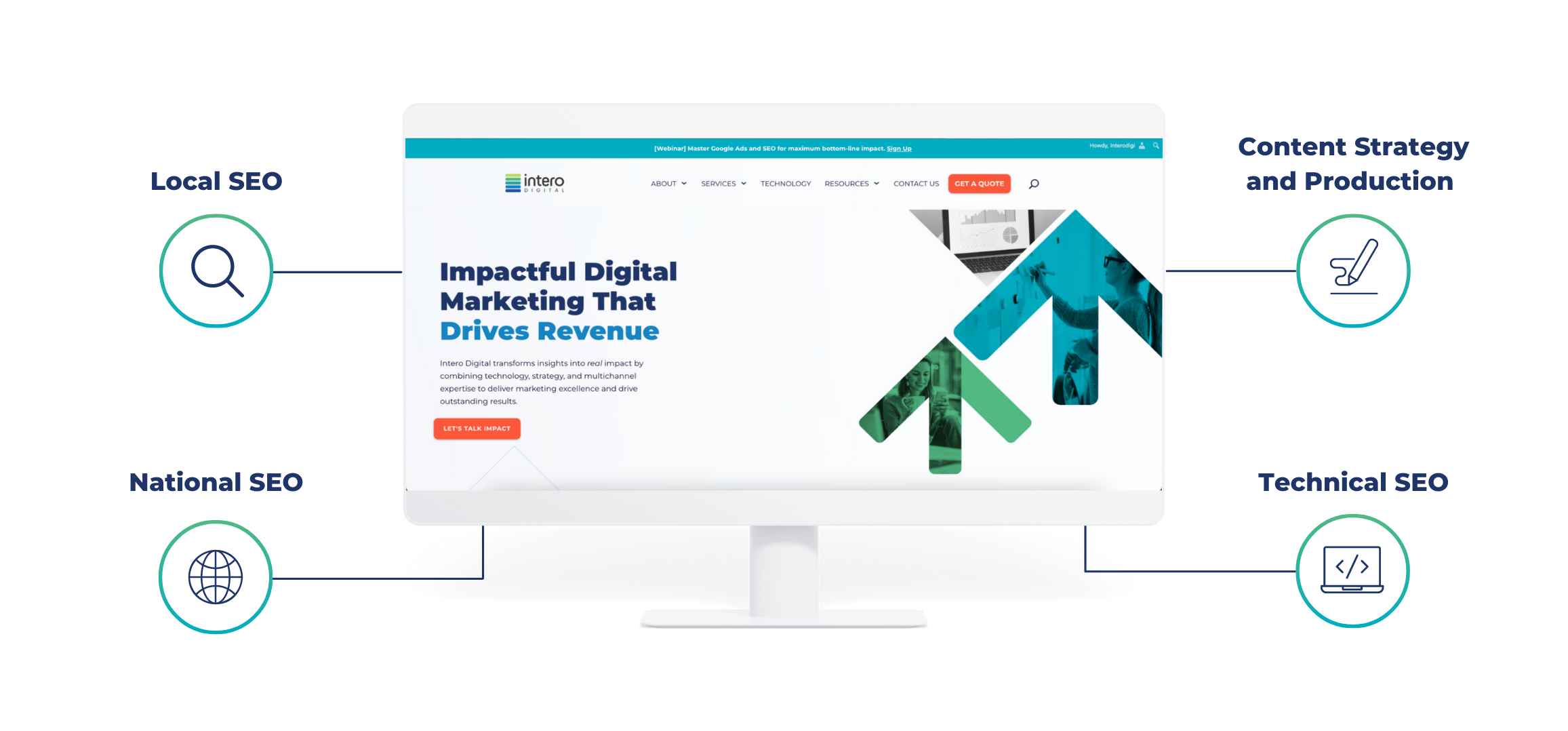
1. Keyword Research and Competitive Analysis
Like all good SEO strategies, we began with market analysis. A full study of the landscape and opportunity for all of our service lines helped us prioritize our efforts.
Target keyword exploration: We started by identifying high-value keywords to drive targeted site traffic. Because we had a fledgling site, we looked for opportunities with longer-tail and less competitive keywords to start while also creating a content wish list for some of the more competitive terms.
Competitive landscape analysis: Next, we analyzed our competitive market share (including the market share of our own legacy sites). As a new brand, it was refreshing to look at our market with a fresh perspective and evaluate all opportunities for our service lines.
Content gap analysis: We also performed a content gap analysis to discover opportunities where our competitors were lacking. This allowed us to create unique and valuable content that addressed our target audience’s specific needs and queries.
Strategic planning: With our market analysis and content wish list in hand, we mapped out a strategic plan. This plan included a detailed content calendar that outlined the creation and optimization of content that was tailored to our target keywords.
2. Content Creation and Optimization
With a solid foundation of keyword research and competitive analysis in place, our next step was to create and optimize high-quality content that would attract and engage our target audience. This phase was all about transforming our keyword insights into valuable resources for our users.
High-quality content production: We started by developing a variety of content types, including blog posts, landing pages, and service pages. Each piece was crafted to be informative, engaging, and optimized for the identified keywords. Our goal was to provide valuable information that would not only attract visitors, but also establish our authority in the digital marketing space.
Content optimization: Once the content was created, we meticulously optimized it for search engines. This involved:
- Ensuring our target keywords appeared in key locations such as titles, headers, and body content.
- Writing engaging meta descriptions that included our primary keywords to improve click-through rates.
- Adding relevant keywords to image file names and alt text to enhance search engine understanding of our content.
Targeted link building campaigns: We launched targeted link building campaigns to enhance our content’s authority and visibility. This involved reaching out to relevant websites and influencers to secure high-quality backlinks. These efforts helped improve our domain authority and search engine rankings.
Content siloing: We organized our content into silos, grouping related topics to create a logical site structure. This not only improved the user experience, but also helped search engines understand the relevance and context of our content. By creating content silos, we ensured our website was easy to navigate and our most important pages received the attention they deserved.
3. Technical SEO Improvements
This critical phase ensured our website was optimized for search engine crawling and indexing, providing a solid foundation for all our SEO efforts.
Canonicalization and XML sitemaps: We began by ensuring proper canonicalization of our root domain to avoid duplicate content issues. We created XML sitemaps that included only live status 200 pages, helping search engines crawl and index our site more efficiently. Additionally, we leveraged HTML sitemaps to provide direct access to deeper pages for both Google and users.
Site speed enhancements: We spent a lot of time on speed optimization (and, to be honest, we still do!). We leveraged code minification, image compression and .htaccess modifications to improve load times.
Mobile-friendliness: We ensured our website was fully responsive and mobile-friendly. Given the increasing number of users accessing websites via mobile devices, this was a vital step. We used Google’s mobile-friendly test tool to verify our site’s performance on mobile and made necessary adjustments to improve usability.
Structured data implementation: To help search engines understand our content, we implemented structured data, including local business, service, article, and organization schema. This provided detailed information about our offerings and improved our chances of appearing in rich search results.
Crawl budget optimization: Our robots.txt file was fine-tuned to block unwanted areas from being crawled, preserving our crawl budget for important pages. This ensured search engines focused on indexing the most relevant content, improving our overall performance.
4. Local SEO Initiatives
With our technical SEO foundation in place, we turned our attention to local SEO initiatives. This strategy was designed to capture traffic from specific markets, ensuring businesses in various regions could find and engage with our services.
Localized keyword mapping: We began by conducting deep keyword research to understand how potential clients in different markets were searching for our services. This involved identifying the “magic words” they used and mapping these keywords to specific locations. Our goal was to ensure each market had the right focus and was effectively targeted.
Localized content creation: We crafted optimized title tags and meta descriptions tailored to the most-searched phrases in each locale. We also produced content specifically designed for different locations, highlighting how our services could meet the unique needs of businesses in those areas. This localized content included blog posts, case studies, and service descriptions tailored to regional search patterns.
Local schema markup: To enhance our local search visibility, we integrated local business and service schema into our pages. This structured data provided detailed information to search engines, helping them understand our services’ local relevance and boosting our chances of appearing in local search results.
Content siloing for local markets: We built content silos around key markets, organizing our local content into easily navigable sections. This not only improved the user experience, but also helped search engines index our local content more effectively. Each silo included market-specific pages that addressed local client needs and showcased our expertise in those regions.
Building local citations: We also focused on building local citations by getting listed in relevant local directories and review sites. This increased our local visibility and helped boost our search engine rankings in specific markets. We ensured our business information was consistent across all listings to enhance credibility and trustworthiness.
Local link building: Our targeted link building campaigns extended to local markets as well. We reached out to local businesses, influencers, and community organizations to secure high-quality backlinks. These local links reinforced our authority and relevance in specific regions, driving more localized traffic to our site.
5. National SEO Strategy
Having strengthened our local presence, we expanded our focus to capture a broader audience with a comprehensive national SEO strategy. This approach aimed to position Intero Digital as a leading digital marketing provider across the country.
Broad keyword research: We conducted advanced keyword research to understand user behavior on a national scale. This involved identifying high-volume, competitive keywords that aligned with our services. By analyzing search trends and patterns across the U.S., we pinpointed terms that would attract a wide audience and drive significant traffic to our site.
Content optimization for national reach: Armed with our keyword insights, we optimized our content to highlight our expertise and services to a national audience. This included the following:
- Each service we offered was thoroughly described on dedicated service pages that were optimized with national keywords to improve visibility.
- We produced in-depth guides, case studies, and whitepapers that addressed common industry challenges and showcased our solutions.
- We implemented service schema across our service pages to provide detailed information to search engines. This structured data helped search engines understand our offerings and enhanced our visibility in search results, especially for broad, national searches.
Content expansion and future-state planning: We didn’t stop at our initial content efforts. We continuously expanded our content to cover more topics and address emerging trends in digital marketing. This forward-thinking approach ensured we stayed relevant and authoritative. By planning future-state content, we prepared our site to address evolving user queries and maintain comprehensive coverage of our services.
National link building campaigns: We targeted high-authority websites, industry blogs, and national publications to secure valuable backlinks. These links boosted our Domain Authority and helped establish Intero Digital as a trusted national brand.
Thanks to our national SEO efforts, we saw a significant increase in organic traffic from across the country, improved search engine rankings for competitive national keywords, and greater engagement with our content. Our comprehensive approach allowed us to connect with a broad audience and demonstrate our expertise on a national scale.
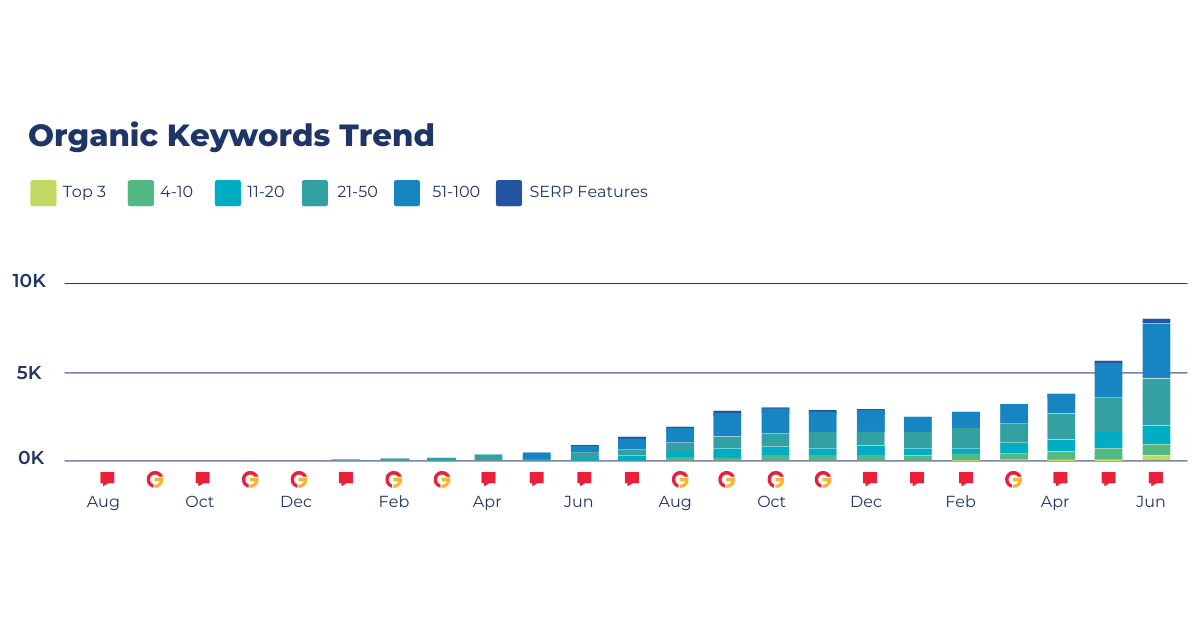
6. Ongoing Monitoring and Adaptation
To sustain our growth and stay ahead of the competition, we embraced a dynamic approach to SEO that involved continuous monitoring and adaptation. This final phase ensured our efforts remained effective and aligned with the ever-evolving digital landscape.
Continuous performance monitoring: We regularly monitored our website’s performance, analyzing valuable insight into our organic traffic, keyword rankings, user behavior, and engagement metrics. By monitoring these indicators closely, we could quickly identify areas that needed improvement.
Data-driven adjustments: Our SEO strategy was guided by data. Whenever we observed fluctuations in our performance metrics, we conducted in-depth analyses to understand the underlying causes. Whether it was a drop in keyword rankings or a decrease in organic traffic, we used this data to make informed adjustments to our strategies. This included refining our keyword targeting, updating content, or tweaking technical aspects of our site.
Content updates: We understood that content could become outdated or lose relevance over time. To combat this, we regularly reviewed and updated our existing content. This involved refreshing statistics, adding new insights, and optimizing for emerging keywords. Keeping our content current and valuable ensured it continued to attract and engage users.
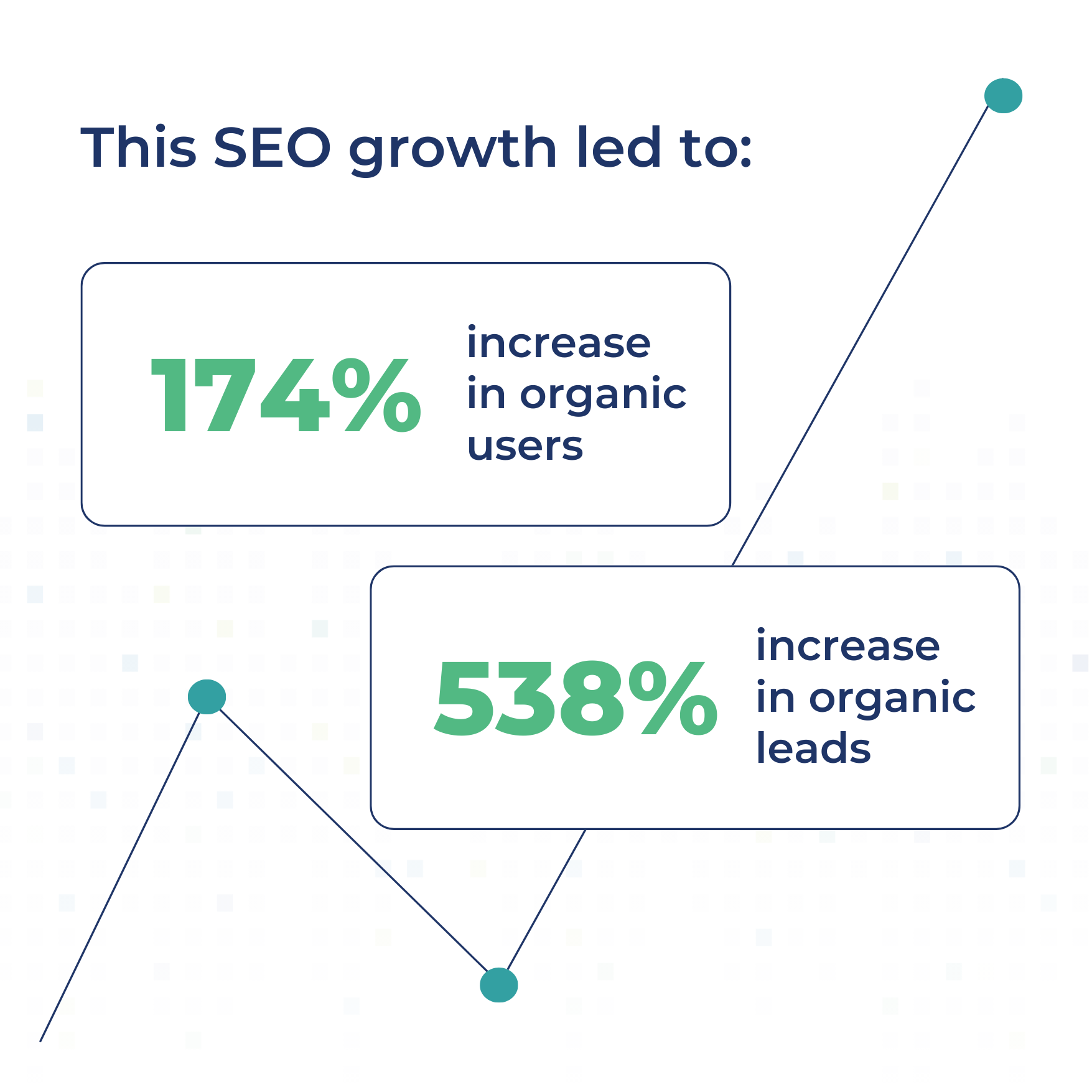
Staying ahead of algorithm changes: Search engine algorithms are constantly evolving, and staying ahead of these changes was crucial. We kept ourselves updated with the latest SEO trends and algorithm updates. By anticipating and adapting to these changes, we maintained and even capitalized on search engine updates.
A/B testing and experimentation: We embraced a culture of experimentation, frequently conducting A/B tests to optimize our site elements. This included testing different versions of meta descriptions, title tags, calls to action, and content layouts. The insights gained from these tests helped us fine-tune our approach and maximize our site’s performance.
User feedback and engagement: Listening to our audience was a key component of our strategy. We actively sought feedback from users through surveys, comments, and engagement metrics. This feedback provided valuable insight into what our audience found most useful and what areas needed improvement. Incorporating this feedback helped us create a more user-centric experience.
Scaling and expanding our efforts: As we grew, we scaled our SEO efforts to match our expanding ambitions. This involved increasing our content production, targeting new keyword opportunities, and exploring additional markets. By continuously scaling our efforts, we maintained momentum and achieved sustained growth.
The ongoing monitoring and adaptation of our SEO strategy helped us stay agile and responsive to changes, safeguarding our growing market share.
The Opportunity Cost: Legacy Sites' Dramatic Decline
One of the most striking lessons from our journey was the stark contrast in performance between our new Intero Digital site and the legacy sites we left behind. Stopping SEO efforts on our legacy brand sites resulted in dramatic declines that showed us just how quickly you can become obsolete.
The Drawbacks
Let’s look at two of our legacy sites to see the gravity of the impact.
The impact of stopping SEO on Legacy Site 1 was immediate and severe. Within just one year, total keyword rankings plummeted by 50.04%. The decline in first-page rankings was equally alarming, decreasing by 36.52%. This sharp fall in rankings led to a significant reduction in organic traffic and an 83.7% decrease in organic leads. Totaling a 75% loss in organic MRR.
Legacy Site 2 experienced an even more dramatic decline. Total keyword rankings fell by 58.26%. The loss in first-page rankings was a staggering 66.10%. This steep decline not only affected visibility, but also resulted in a noticeable drop in lead generation and overall site performance. Over the course of a year, organic traffic fell by 53% and organic leads fell by 85.8%. Equivalent to 88% in lost organic lead MRR.
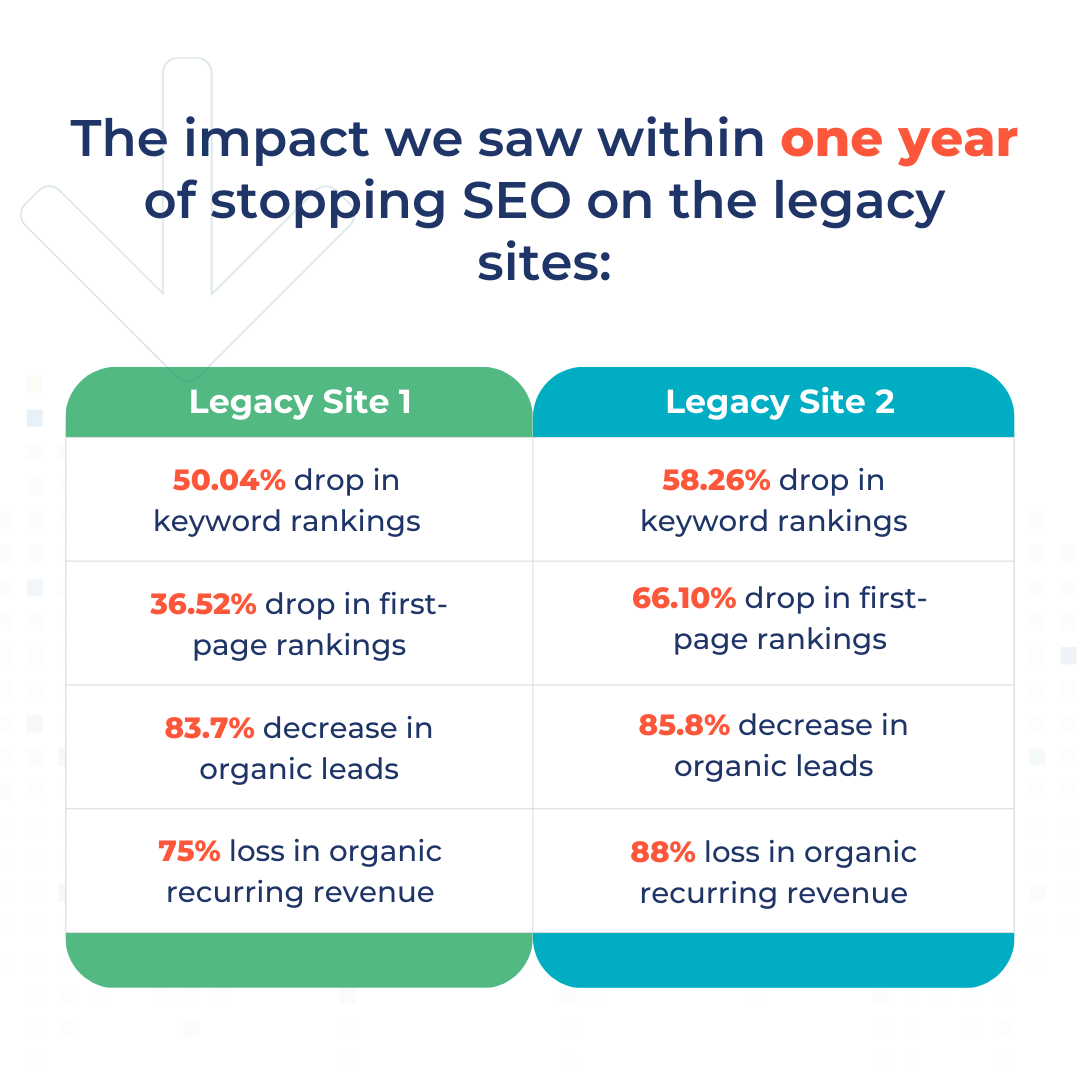
Impact and Lessons Learned
The drop-off of the legacy sites was so imminent and severe that even though we were prepared for the outcome, we were still shocked. These were sites that had both been live for over a decade and had significant authority and market share. While we made substantial headway in a year with Intero Digital, it took longer to fully recoup the value and lead flow of the legacy websites. Now that the sites have run their course and are generating very few leads, we’re at the stage of sunsetting and redirecting them, embracing our new brand fully.
I’ll spare you the message about sustaining SEO and content strategies. Yes, we all know engaging in ongoing SEO and content is important. Instead, I’m sharing this story because the juxtaposition of results in these two cases was stunning. And in this experience, we’ve learned that sometimes letting go of what once worked is the only way to truly grow.
